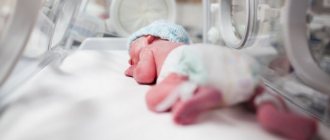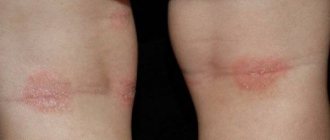Obesity in children and adolescents is one of the serious problems of modern society. According to WHO, about 12% of the child population of our country already suffers from this disease. Doctors' forecasts are disappointing: up to 60% of these children will almost certainly have problems with excess weight in adulthood. Many diseases characteristic of overweight adults begin to manifest themselves in childhood.
The consequences of obesity in children include metabolic syndrome (a complex of metabolic disorders), atherosclerosis, arterial hypertension, type 2 diabetes mellitus, non-alcoholic fatty liver disease, cholelithiasis, as well as diseases of the musculoskeletal and reproductive systems.
How to determine obesity in children and adolescents
Body mass index is the ratio of body weight (in kg) to the length of the body in a lying position or height in a standing position (in m), squared (in other words, weight should be divided by height squared). This is how BMI is determined for adults. Calculating BMI for children has its own characteristics; clarifying coefficients are used here, which adjust for the age and gender of the child. In practice, doctors use special tables and graphs, taking into account the individual characteristics of the child.
The classification of obesity in children involves four stages of the disease. The first degree (still just overweight) appears when the body mass index (BMI) is 15% or more higher than normal.
More serious stages of obesity in children (second, third and fourth) are diagnosed when the required body mass index is exceeded by 25%, 50% and 100%, respectively. However, it should be taken into account that the indicators are individual, and there is no need to make hasty conclusions without a doctor’s opinion.
Diagnostics
A pediatrician or pediatric endocrinologist knows how to identify, diagnose and treat obesity in children. First of all, the clinician must independently carry out several manipulations, in particular:
- get acquainted with the medical history of the child and his close relatives - to establish the fact of genetic predisposition or the influence of a predisposing factor with a pathological basis;
- analyze the patient’s life history - this should include information regarding the nutrition or daily routine of children and adolescents;
- calculate the body mass index, having previously measured the patient’s height and weight;
- carefully examine the patient;
- interview the patient or his parents in detail so that the physician can obtain a complete symptomatic picture of the course of such an illness.
Laboratory diagnosis of obesity in a child involves:
- general clinical blood test;
- blood biochemistry;
- hormonal tests.
Additional instrumental procedures include:
- ultrasonography of the adrenal glands, pituitary gland and thyroid gland;
- bioimpedance study;
- densitometry;
- REG and EEG;
- CT and MRI.
Densitometry
In addition to the pediatrician and endocrinologist, other pediatric specialists should take part in the diagnosis, namely:
- gastroenterologist;
- neurologist;
- geneticist.
Causes of childhood obesity
What are the causes and treatment of childhood obesity? The main reason is eating disorders. This definition includes:
- Eat plenty of food in the evening.
- Overnutrition (eating more than enough food to be sufficiently full).
- Numerous snacks throughout the day.
- Eating outside the home that cannot be controlled.
- Preferring fast food to healthy food.
At the same time, the determining role in the problem of obesity in children is often played by the parents themselves, who do not limit the child’s food intake and thereby form unhealthy eating behavior. Emerging childhood obesity, left without proper medical attention, treatment and correction with the help of nutritional therapy, leads to the progression of the disease and the occurrence of dangerous complications.
Obesity in adolescents
Overweight adolescents have a higher risk of developing diseases of the joints and bones, vascular pathologies, diseases associated with metabolism and the functioning of the gastrointestinal tract. Dissatisfaction with one's own appearance provokes the development of complexes and depression, which only aggravates the situation.
To treat obesity in adolescents, along with diet therapy, it is advisable to increase physical activity. Swimming, aerobics, athletics, and outdoor games help you burn more calories and strengthen your muscles.
Symptoms
Overweight child
The main sign of the disease in any age category is an increase in the layer of subcutaneous fat, as well as fat deposition in the hips, anterior abdominal wall, pelvis and back, face and sternum, as well as in the upper and lower extremities.
In newborns and young children, the main symptoms, in addition to the above, are considered to be:
- disruption of the bowel movement process, constipation is often observed;
- dysbacteriosis;
- frequent exposure to allergic reactions and infectious diseases;
- inactivity of the baby;
- delay in the formation of simple motor skills.
At the second peak of incidence from 5 to 7 years, the following clinical manifestations may be expressed:
- increased sweating;
- shortness of breath during physical activity;
- increased blood pressure;
- change in figure, i.e. build-up of adipose tissue in the abdomen, hips and upper extremities;
- decreased performance.
The symptomatic picture of obesity in adolescents consists of the following symptoms:
- more pronounced expression of the above characteristics;
- fast fatiguability;
- the appearance of shortness of breath even with minor physical activity;
- menstrual disorder in girls;
- attacks of headache and dizziness;
- angina pectoris;
- pressing pain in the heart area;
- frequent swelling of the upper and lower extremities;
- muscle and joint pain;
- low self-esteem and depression.
In children with secondary obesity, the main manifestations will be combined with the most characteristic signs of the underlying disease. In situations where hypothyroidism has become a provoking factor, the symptoms will be as follows:
- infants are late in starting to hold their head up, crawl, sit and walk on their own;
- late eruption of the first teeth;
- weakness and constant drowsiness;
- memory and learning problems;
- dry skin.
The main symptom of Cushingoid obesity, i.e., formed against the background of Itsenko-Cushing syndrome, is represented by fat accumulations in the abdomen, face and neck, while the upper and lower extremities remain thin.
Obesity in children
In addition to obesity, the occurrence of polycystic ovary syndrome in girls may also be indicated by:
- oily skin;
- increased hair growth;
- acne;
- irregular or scanty periods.
With adipose-genital dystrophy in men, in addition to increased BMI, the following is observed:
- cryptorchidism;
- increase in the size of the mammary glands;
- underdevelopment of the penis.
From all of the above it follows that the clinical picture will be individual in nature.
Treatment and prevention
The approach to the treatment of obesity in children and adolescents, regulated by the International Consensus Protocol on Childhood Obesity, involves comprehensive treatment. It includes:
- Changes in eating behavior. Often, the irrepressible desire of grandparents to feed their child becomes the reason for regular overeating, which can lead to the development of childhood obesity. It is necessary to control exactly how he eats when visiting, how often he visits cafes, and what he spends his pocket money on. To prepare homemade food, you should buy only high-quality products recommended for consumption by a nutritionist.
- Lifestyle changes. Sufficient physical activity, adherence to a daily routine, a full night's sleep - all this will only bring benefits. Daily walking, swimming, aerobics and other physical activity to prevent obesity in children and adolescents should total at least 60 minutes a day.
- Setting achievable goals. Instead of losing 10 kg in a month, set more realistic goals. For example, stop drinking sugary drinks or at least reduce their consumption. Gradually, you can introduce new habits, and the treatment will be less painful.
- Self-control. You won't be able to control your child all the time, so it's important to teach him to do it on his own. This can be turned into a game, asking, for example, to count the number of sweets eaten or keep track of the distance traveled during the day.
General information
Recently, cases of overweight have become more frequent, which are observed all over the world; the share of childhood obesity is 10%. In developed countries, currently about 20% of adolescents are overweight, and 15% are obese. In the described situation, correct and effective prevention and treatment of obesity as a pathology is very important.
If a child is rapidly gaining weight, parents should consult a doctor to determine whether the child is obese. Once diagnosed, they can follow obesity prevention guidelines because... most often they have the same problems. Parents do not play sports and try to avoid physical activity. Therefore, certain difficulties often arise when a doctor prescribes treatment.
The child’s family should definitely be involved in this process; how they feel about the process of eating, the quantity and quality of food taken, largely determines the child’s attitude towards food. This is explained by following (modeling) parental eating behavior or heredity, which has a negative impact on the child’s energy balance and body.
Also provoking factors for weight gain are:
- passive lifestyle;
- lack of movement, lack of physical activity;
- lack of rest and sleep;
- passion for fast food, flour products, semi-finished products.
Parents who care about the proper development and health of the child should minimize these negative factors. If the family constantly has high-calorie, fatty and unhealthy food on the table, children will not be able to form correct eating habits. Parents should lead by example, eat right, and lead an active lifestyle.
Diet for treating obesity
The fundamental principle of diet therapy for obesity is to gradually reduce the energy value of food and achieve a negative energy balance. At the same time, it is strategically important to maintain a balanced nutritional value of the diet so that the growing body receives proteins, fats, carbohydrates, vitamins, macro- and microelements in sufficient quantities.
Most often, in the treatment of obesity, a hypocaloric diet with a low content of carbohydrates and animal fats is used. The amount of protein in the diet should correspond to the age norm or be higher than it. You can enrich your food with easily digestible protein of high biological value by adding dry protein mixtures to your dishes.
Fast carbohydrates are excluded from the diet almost completely or are strictly limited. It is recommended to use foods containing a lot of fiber, as it promotes a faster feeling of fullness and stimulates intestinal function.
In addition, you should exclude foods that stimulate the appetite (condiments, spices, pickles, preserves) and adjust the diet so that the child eats 5-6 times a day in small portions.
Foods for childhood obesity
Dietary meals for obese children should contain all the main food groups, be varied and have good taste. This is lean meat (beef, poultry, rabbit, fish), vegetables, fruits, berries, low-fat dairy products and cheeses.
You should limit your sugar intake by replacing it with sweeteners. Eggs, potatoes, ham, cereals, rye bread and butter are also subject to the restriction. Spicy and salty dishes, meat, fish and mushroom broths, fatty meats and fish, sausages, nuts, bananas, grapes, confectionery and sweets (ice cream, juices, carbonated drinks) should be completely excluded from the diet. Food should be prepared, if possible, without the use of table salt, the daily norm of which is reduced to 5 g.
When preparing dishes, preference should be given to heat treatment methods such as boiling and stewing.
Early diagnosis of obesity in children aged 2-9 years, as well as increasing adult literacy in the field of obesity prevention, will help begin the necessary therapy in time and prevent the progression of the disease. An excellent addition to a weight loss program would be to use a food diary, which will allow you to analyze the ratio of food consumed per day and physical activity received.
The problem of childhood obesity requires careful attention from adults, early seeking medical help and strict adherence to the recommendations of a nutritionist. Only through joint efforts can we bring a child’s weight to an age-appropriate level and save him from many health problems in the present and future.
Physical activity
When the baby is still too small, but is overweight, he is prescribed physical activity: massages, gymnastics and physical therapy. Such procedures can be carried out on a child starting from 5 months. Be sure to consult your doctor about exercise therapy for infants. Do physical activity with your child. Remember: the baby should try to imitate you.
For a more detailed introduction to physical activity for obese infants, watch our video lesson.











